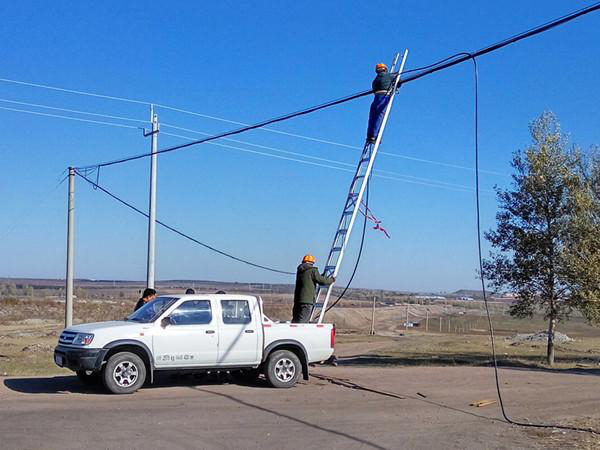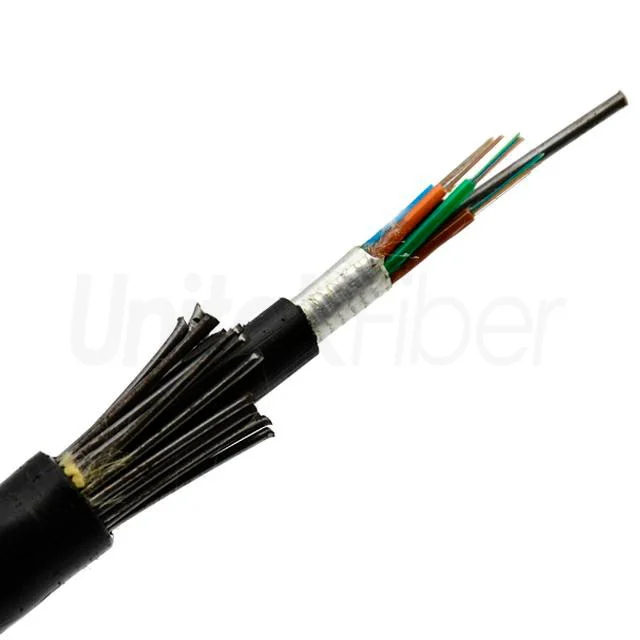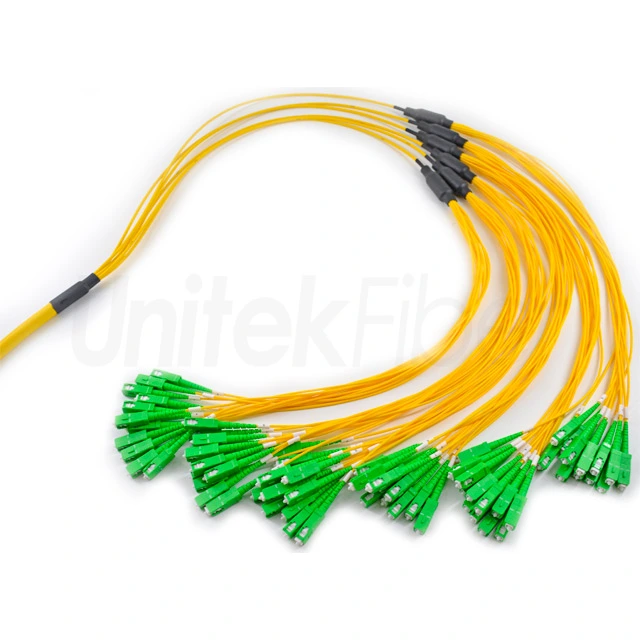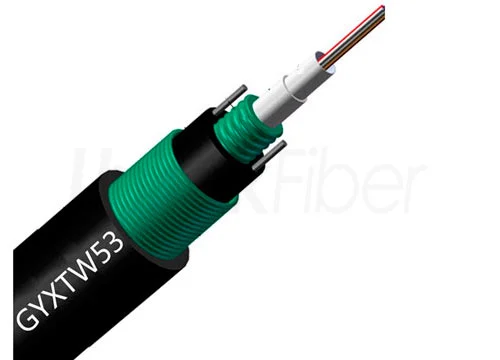

When there are telegraph poles between buildings, steel wire rope can be set up between buildings and poles, and optical cable could be thus tied on it; if there are no telegraph poles between buildings, but the distance is about 50m, optical cable can also be directly set up between buildings with steel wire rope.
· Hang optical cables by pothooks when laying them on flat ground, but bind optical cables in mountain or steep slope. The optical cable joint shall be located at the straight pole in which cables are easy to maintain, and the reserved optical cables shall be fixed on the pole with the reserved brackets.
·U-shaped expansion bend is required every 3-5 poles for the optical cables strung on poles, and about 15m should be reserved for every 1000m.
·The aerial optical cables laying up to wall shall be protected with galvanized steel pipes, and the pipe orifices shall be blocked with fireproof mud.
·Warning signs shall be hung for aerial optical cables about every 4 poles or when the laying construction needs to cross roads, rivers, bridges and other special sections.
·Trident protection pipe shall be added at the intersection of suspension line and power line, and the elongation of each end shall not be less than 1m.
·The electric pole close to the road side shall be sheathed with 2m luminous rod.
·In order to prevent the induced current of the suspension wire from hurting people, the stay wire of each pole shall be electrically connected with the suspension wire, and the ground wire of stay wire type shall be installed at each stay wire position. The suspension wire shall be directly connected with the lining ring, and directly grounded at the terminal.
The aerial cable is usually 3m high from the ground. When entering the building, it is required to pass into the U-shaped steel protective sleeve on the outer wall, and then extend downward or upward. The diameter of the optical cable entrance is generally 5cm.
Note: in addition to the above three common outdoor optical cable laying methods, there is also a wall-laying method, which will be used in some special environments. Here is a brief introduction.
When the outdoor optical cable is laid on the wall, the following requirements shall be met.
(1) Except for the upper part of the underground optical cable, it is forbidden to lay armored or oil hemp optical cable on the wall.
(2) When it crosses the courtyard street or the courtyard passage and so on, the minimum distance between the lowest point of the cable and the ground shall not be less than 4.5cm.
(3) 7 / 2.2 and 7 / 2.6 are adopted for the suspension line with the support spacing of 8-10m. The distance between the terminal fixation and the first intermediate support shall not be more than 5m.
(4) When laying the cable horizontally or vertically, the terminal fixation and the middle support of suspension line shall conform to Acceptance Specifications for Local Network Communication Lines.
(5) It must be on the same side of the cable. The optical cable should not be laid along the wall in the form of hook; if it is unavoidable, the optical cable should be protected by a sleeve. When the optical cable is laid along the suspension line protruding from the wall on the indoor floor, the distance between the hooks is 1m.
This article is from Jiangsu Hansheng Cable Technology Co., Ltd. For reprint please indicate the source!
Learn more about our products from fiber optic products supplier Unitekfiber:
lPole mounted fiber optic cable
lDirect burial fiber optic cable pre terminated



